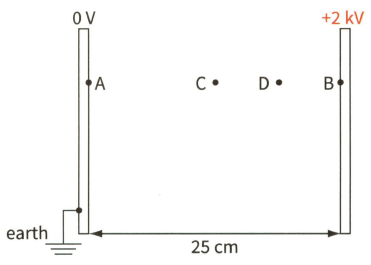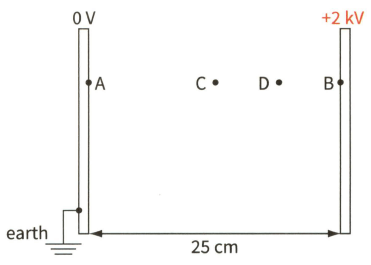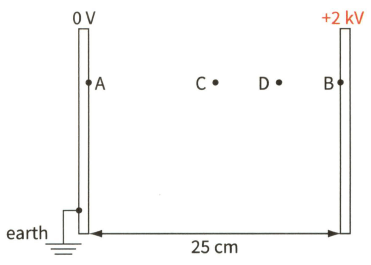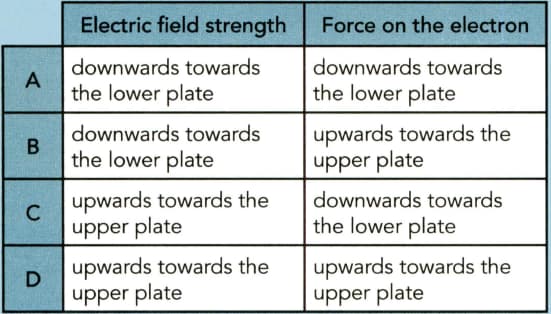In Figure, two parallel plates are shown, separated by $25 \mathrm{~cm}$.

Copy the diagram and draw field lines to represent the field between the plates.


Important Questions on Uniform Electric Fields
In Figure, two parallel plates are shown, separated by . What is the potential difference between points A and B?

In Figure, two parallel plates are shown, separated by $25 \mathrm{~cm}$.

What is the electric field strength at $C$, and at $\mathrm{D}$ ?
In Figure, two parallel plates are shown, separated by $25 \mathrm{~cm}$.

Calculate the electric force on a charge of $+5 \mu \mathrm{C}$ placed at $\mathrm{C}$. In which direction does the force act?
Use a diagram to explain how the electric force on a charged particle could be used to separate a beam of electrons $\left(\mathrm{e}^{-}\right)$ and positrons $\left(\mathrm{e}^{+}\right)$ into two separate beams. (A positron is a positively charged particle that has the same mass as an electron but opposite charge. Positron-electron pairs are often produced in collisions in a particle accelerator.)
Use a diagram to explain how the electric force on a charged particle could be used to separate a beam of electrons $\left(\mathrm{e}^{-}\right)$ and positrons $\left(\mathrm{e}^{+}\right)$ into two separate beams. (A positron is a positively charged particle that has the same mass as an electron but opposite charge. Positron-electron pairs are often produced in collisions in a particle accelerator.)
Explain how this effect could be used to separate ions that have different masses and charges.A pair of charged parallel plates are arranged horizontally in a vacuum. The upper plate carries a negative charge and the lower plate is earthed.
An electron enters the space between the plates at right angles to the electric field. In which direction is the electric field between the plates and in which direction is the force on the electron?

